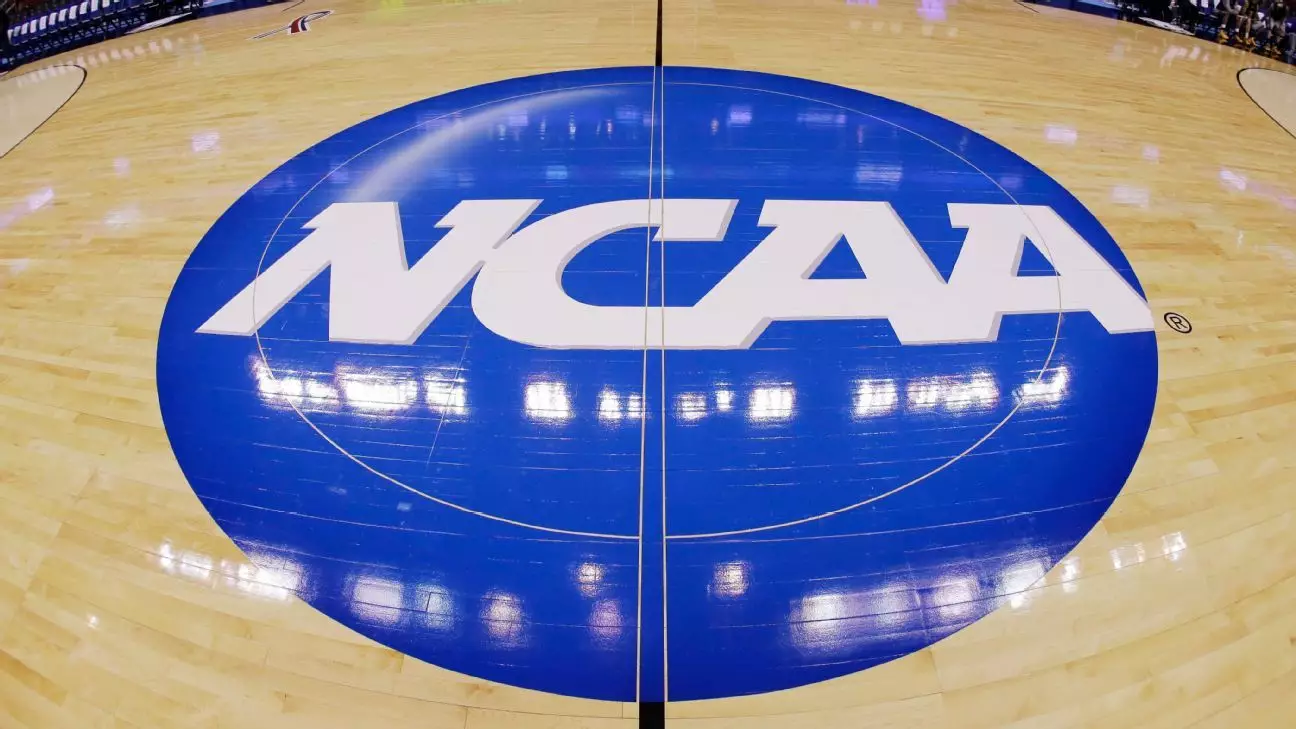The recent twists and turns in the legal saga surrounding the NCAA highlight a convoluted landscape filled with conflicting interests. At the heart of this complex issue is a federal judge’s refusal to approve a multibillion-dollar antitrust settlement that could have far-reaching consequences for college athletes. Judge Claudia Wilken’s insistence on revising the contentious roster limits proposed by the NCAA underscores a pivotal moment where the rights and dreams of young athletes clash with the institutional priorities of a billion-dollar industry.
The NCAA recently agreed to a staggering $2.8 billion payout to past and present athletes, stemming from allegations that its regulations had stifled their earning potential. This agreement, known colloquially as the House settlement—named after lead plaintiff Grant House—would mark a transformative shift in college athletics, allowing universities to compensate players directly. However, the fine print regarding roster limitations complicates an already sensitive negotiation, leaving many to wonder: at what cost is this new paradigm achieving fairness?
Rugged Terrain Ahead: Proposed Roster Limits
One of the most controversial aspects of the settlement is the proposed roster limits intended to prevent wealthier institutions from hoarding talent. This “salary cap” approach would fundamentally alter how teams manage their rosters and could force current athletes off their teams. Wilken pointedly stated that immediately implementing these roster limits might inflict unnecessary harm on existing athletes, who could find themselves unceremoniously removed from rosters due to compliance measures. The immediate need for reform must not come at the expense of the very individuals the settlement seeks to empower.
Critics argue that the NCAA’s logic concerning these roster limits is fraught with flaws. The NCAA has contended it is impractical to amend its plans now, citing that many schools had already taken steps to cut players in anticipation of the settlement’s approval. Wilken rebuffed this argument decisively, emphasizing that any disruption caused was self-inflicted—conveniently ignoring the very athletes the organization claims to protect while prioritizing logistical ease. This standoff raises alarming questions about who matters most in this equation: the institutions or the athletes?
A Legal Battleground: Athletes’ Voices Finally Heard
Throughout this process, the voices of athletes have become increasingly pivotal. Many current players have made their dissatisfaction clear, rallying around the idea that they deserve the opportunity to complete their college careers without fear of being displaced. One poignant example is Gannon Flynn, a freshman swimmer at Utah, who found himself on the chopping block due to these proposed roster changes. His courage to speak out represents a broader camaraderie among athletes who feel powerless against an institution that has, for far too long, dictated their fates without adequate consideration.
As the legal tug-of-war continues, the settlement remains under scrutiny. With the clock ticking, the NCAA is under pressure to resolve its differences with the plaintiffs before a trial becomes inevitable. The urgency stems not only from a desire to reach a compromise but also from the realization that time is running out for the incoming class of athletes who want clarity before their futures are decided for them.
The Ethics of a System in Crisis
At the heart of this dilemma lies a fundamental ethical question: should a profit-driven organization prioritize its operational norms over the aspirations of young athletes? The NCAA’s continued insistence on limiting roster sizes, while promoting the potential for increased payments to athletes, paints a picture of a system that remains obstinately out of touch with the realities on the ground. This apparent dissonance raises the stakes for both sides—where student-athlete success seems to be a collateral loss in the NCAA’s desperate rush to safeguard institutional integrity.
Steve Berman, a co-lead attorney for the plaintiffs, posited that the NCAA could very well be forced to revisit its stance on roster limits to salvage this settlement. This suggests a glimmer of hope that the pressures and moral imperatives will spur institutional change. However, skepticism lingers: will the NCAA do what’s right for the athletes, or will it stubbornly cling to its archaic practices, risking a trial and further alienating the very individuals it claims to support?
The Impending Era of Student-Athlete Rights
The potential for change in college sports remains tantalizingly close, yet systemic barriers threaten to thwart any progress. The impending modifications to the NCAA’s framework could signal the dawn of an era where student-athletes are recognized not just as players but as individuals with rights deserving protection. This pivotal moment begs for an evolution where college athletics can thrive in balance—allowing athletes to chase excellence on and off the field while receiving equitable treatment and respect from the institutions they represent.
As the dialogue unfolds, one can only hope that fairness prevails, ensuring the safety and rights of these ambitious young athletes, who have long stood on the sidelines of their own futures. The responsibility lies with the NCAA to navigate this transformative legal landscape and ensure that it paves the way for authentic equity in college sports—not just a superficial rebranding masked as progress.


Leave a Reply